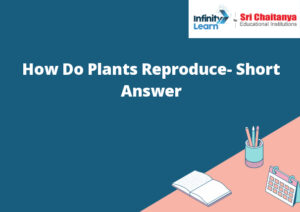Table of Contents
How Do Plants Reproduce?
Various Methods of Asexual Mode of Reproduction in Plants Are as Follows;
Sexual Reproduction Occurs through the Following Steps in Plants:
Plants reproduce through seeds. The seeds are produced by the flowers of the plants. The flowers are pollinated by the wind or by insects. The pollen from the flowers is transferred to the pistil of the flower. The pollen grain grows a tube down the pistil to the ovule. The sperm from the pollen grain fertilizes the egg in the ovule. The fertilized egg develops into a seed. The seed grows into a new plant.

Reproduction in Plants
Plants reproduce by means of spores, pollen, or seeds. Spores are produced by some plants in special structures called sporangia. Pollen is produced by the stamens of a flower. Seeds are produced by the ovules of a flower.
Asexual Reproduction
Asexual reproduction is a process that allows an organism to create a genetically similar copy of itself without the involvement of another organism. This can be done through a variety of methods, including binary fission, budding, and fragmentation.
Budding
Budding is a type of asexual reproduction where a new organism grows from an outgrowth of an older organism. The outgrowth is called a bud and the new organism is called a clone.
Vegetative
propagation is the process of asexual reproduction in plants. It is the most common form of reproduction in plants, and it occurs when a new plant grows from a fragment of the parent plant. Vegetative propagation can occur through rooting a stem cutting, layering, division, or grafting.
Apomixis
Apomixis is asexual reproduction, where the offspring are genetically identical to the parent. This can happen through a variety of mechanisms, including fragmentation, budding, and parthenogenesis (asexual reproduction from an unfertilized egg).
Fragmentation
Fragmentation is the process of breaking a large file into smaller pieces that can be stored on a computer. A fragmented file is one that has been broken into pieces and is not stored contiguously. Fragmentation can occur when a file is saved to a disk, or when a file is copied from one disk to another.
When a file is fragmented, the computer must search through multiple pieces of the file in order to access it. This can cause a significant decrease in the performance of the computer. Fragmentation can be minimized by using a disk defragmenter, which reorganizes the files on the disk so that they are stored contiguously.
Also Read: How Do Organisms Reproduce – Types of Reproductions in Plants & Animals
Sexual Reproduction in Plants
In plants, sexual reproduction involves the fusion of two gametes, or sex cells, to form a new organism. The gametes are produced by the male and female reproductive organs, or sex organs.
The male reproductive organ, or penis, is used to deposit sperm inside the female reproductive organ, or vagina. The sperm then swim to the egg, where fertilization occurs. The fertilized egg then develops into a new organism.
Plants can also reproduce asexually, by means of cloning. In asexual reproduction, a new organism is created by splitting off a section of an existing plant.
The Male and Female Components of a Flower
The male and female components of a flower are the stamen and the pistil. The stamen is the male organ of a flower and consists of the filament and the anther. The filament is the stalk of the stamen and the anther is the pollen-producing part of the stamen. The pistil is the female organ of a flower and consists of the stigma, the style, and the ovary. The stigma is the sticky part of the pistil that catches pollen, the style is the stalk of the pistil, and the ovary is the part of the pistil that contains the eggs.
Pollination
Pollination is the transfer of pollen from the male anther of a flower to the female stigma of a flower. This process is necessary for the fertilization of the ovules and the production of seed. Pollination can be accomplished by wind, water, or animals.
Zygote Formation
Zygote formation is the process by which a new organism is created from two cells. The process begins when a sperm fertilizes an egg, and the resulting zygote divides and grows into an embryo.
Fruit and Seed Formation
Fruit and seed formation is a process that begins with fertilization and ends with the dispersal of the mature fruit and seeds.
Fertilization:
Fertilization is when a sperm from the male plant combines with an egg from the female plant. This process creates a zygote, which is the first cell of a new plant.
Growth and Development of the Fruit:
The zygote will divide and grow, forming a small, seed-like structure called a seedling. The seedling will grow a stem and leaves, and will eventually flower.
The flowers will produce nectar, which will attract pollinators like bees. The pollinators will transfer pollen from the stamen to the pistil, fertilizing the ovules.
The fertilized ovules will begin to grow and divide, forming the fruit. The fruit will grow and mature, and will eventually release the seeds.
Dispersal of the Seeds:
The seeds will be dispersed by the wind, animals, or water. They will travel to new locations, where they will germinate and grow into new plants.








